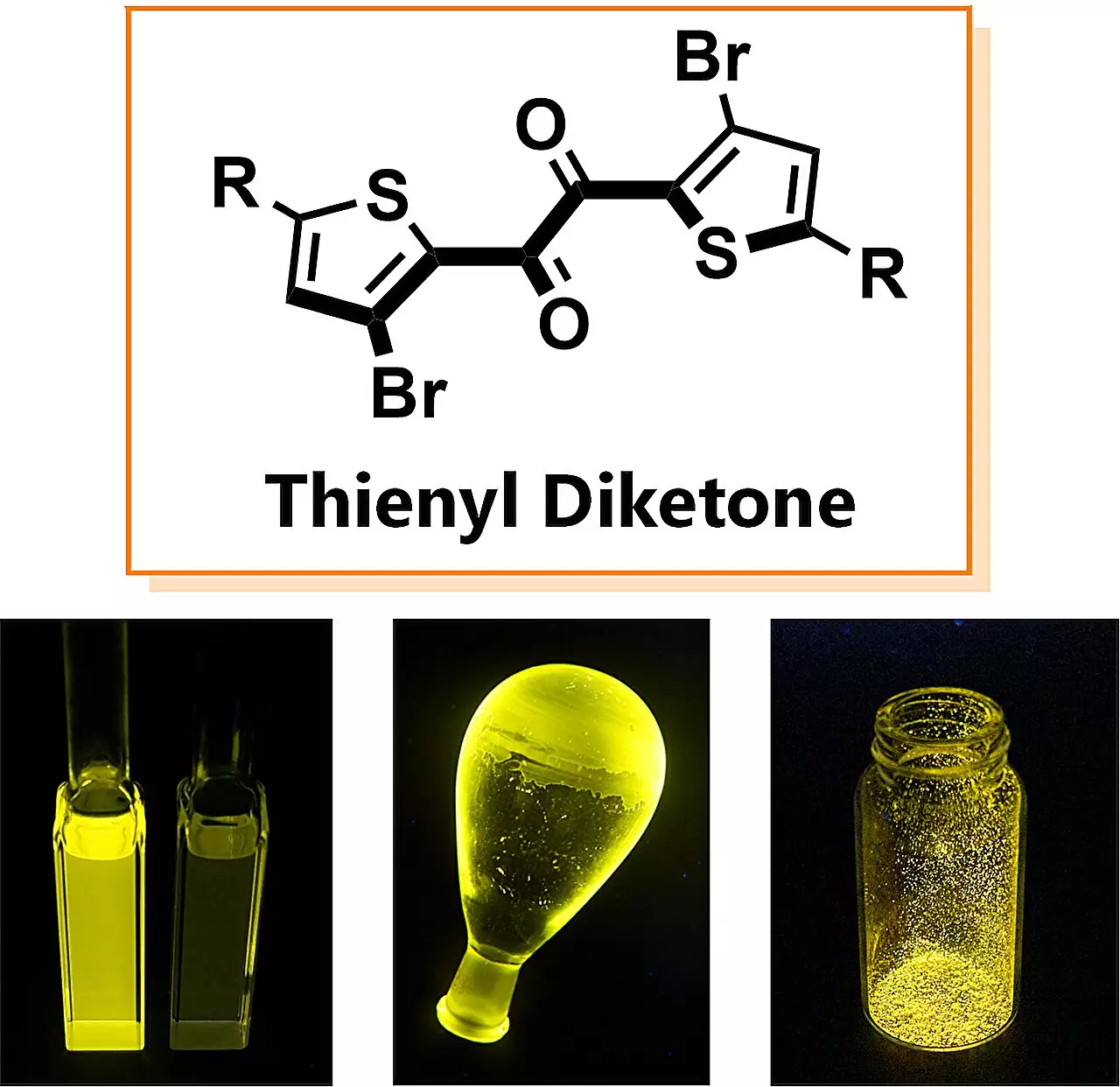Recent developments in organic chemistry have unveiled the remarkable properties of a new molecule named thienyl diketone, unveiled by a research team from Osaka University. This organic compound is making waves due to its unprecedented capability to achieve high-efficiency phosphorescence, outperforming conventional materials by over tenfold. The implications of this research, published in the journal *Chemical Science*, extend far beyond mere academic curiosity; they suggest new horizons for technology reliant on phosphorescent materials.
The Mechanism Behind Phosphorescence
Phosphorescence, the phenomenon where a material absorbs light and then re-emits it over an extended period, is critical for various applications, including organic light-emitting diodes (OLEDs) and even cancer diagnostics. Traditionally, the efficiency of phosphorescent materials has relied heavily on rare metals such as iridium and platinum, which pose both cost and sustainability issues. Understanding the mechanics of how this transition occurs is vital, as it involves complex energy state shifts within the molecule, often thwarted by non-radiative losses that convert energy into heat instead of light. This competition between light emission and energy loss has been the Achilles’ heel of organic phosphorescent materials until now.
Thienyl Diketone’s Unique Properties
The introduction of thienyl diketone presents a significant advancement in addressing these challenges. Unlike its predecessors, this compound minimizes the non-radiative energy loss through a carefully engineered molecular structure. This design is the result of serendipitous discovery and rigorous investigation led by senior researcher Yosuke Tani, who noted, “We stumbled upon this molecule and initially could not pinpoint its superior performance attributes. However, as our understanding grew, so did our excitement about its potential.” This statement showcases the unpredictable nature of scientific breakthroughs—sometimes, the most potent advancements arise from unexpected avenues.
The Significance for Future Technologies
The practical implications of this discovery are enormous. Dr. Tani’s research not only elucidates the mechanisms behind the molecule’s superior performance but also sets the stage for the development of organic phosphorescent materials that are not reliant on rare metals. As industries shift towards sustainable practices, this innovation presents a golden opportunity to create cost-effective and environmentally friendly alternatives to existing technologies. The ability to design new phosphorescent materials opens vistas in fields beyond lighting and displays; applications in medical diagnostics could lead to improved imaging techniques or targeted therapies based on light emission properties.
A Bright Horizon Ahead
While this breakthrough marks a pivotal moment, Tani emphasizes that the journey does not end here. There remains a plethora of unexplored possibilities associated with thienyl diketone and other organic compounds. The research team is enthusiastic about contributing significantly to future advancements in materials science. Their findings thread together the past, present, and future of phosphorescent technology—a tapestry that could lead to both innovative consumer products and revolutionary medical applications. As the exploration of these organic luminescent materials continues, we stand on the cusp of a new era, where efficiency and sustainability go hand in hand, illuminating the path toward the future.


Leave a Reply